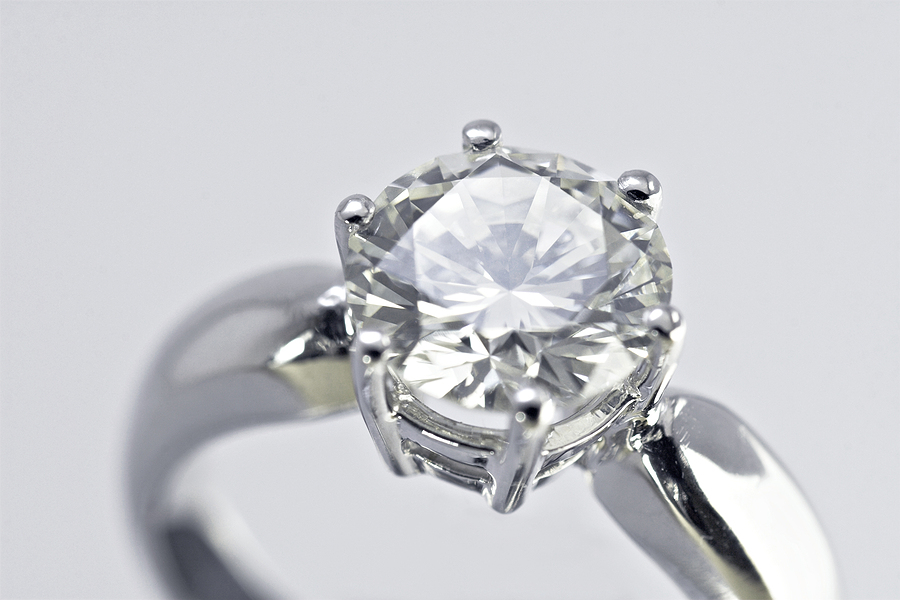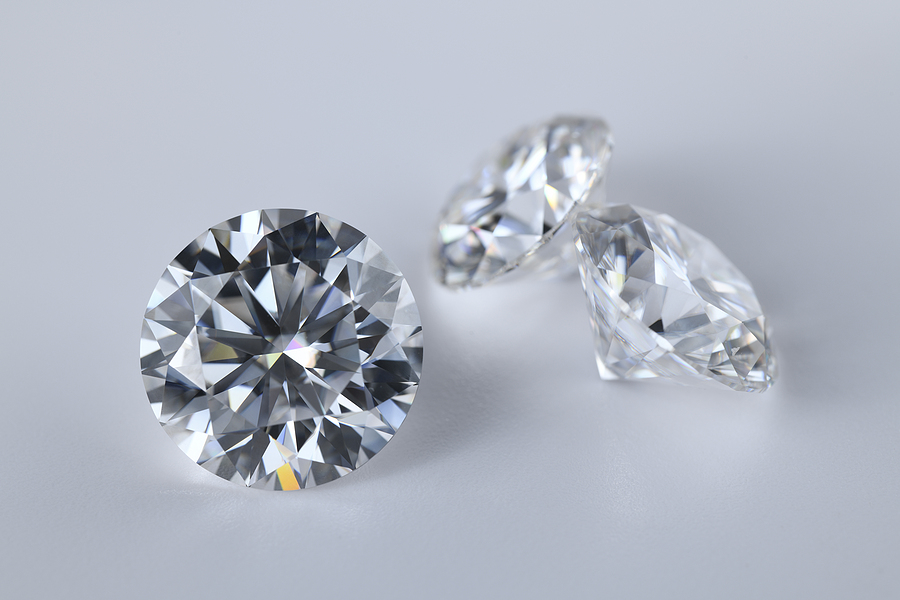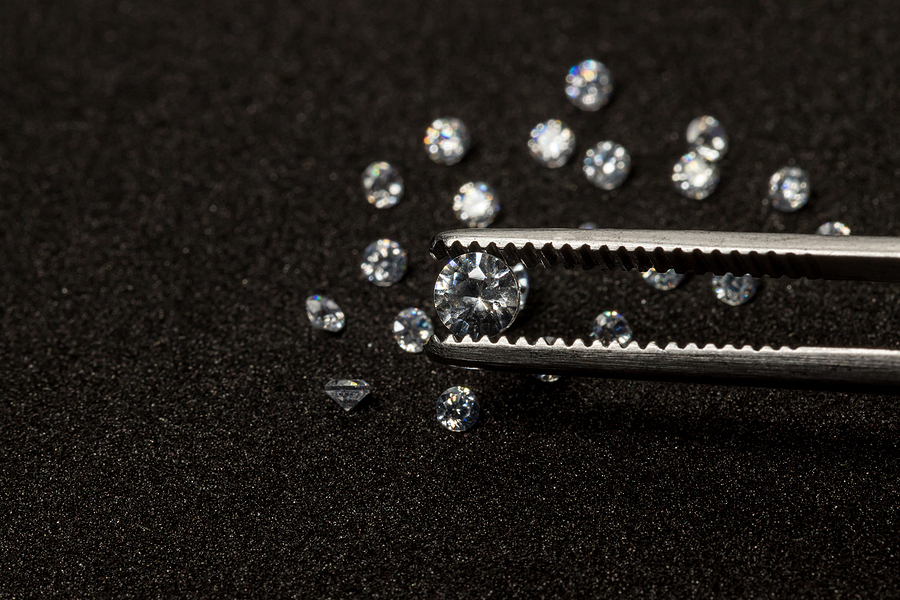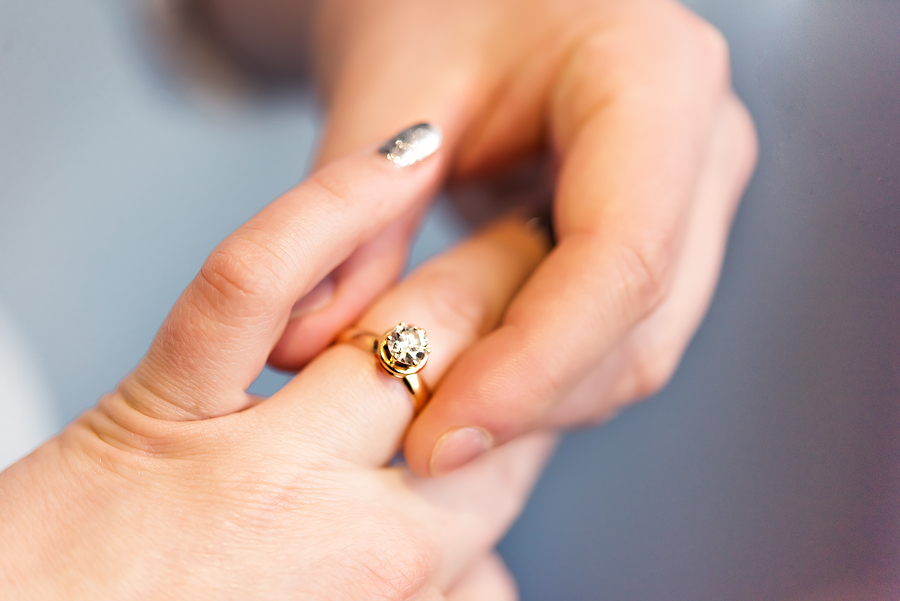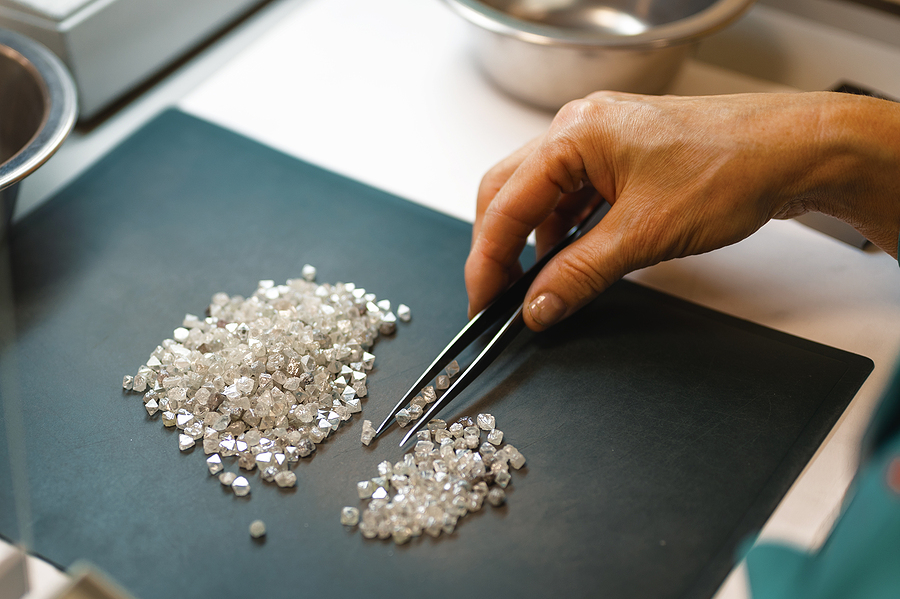Moissanite is an eco-friendly alternative to diamonds. It is the second hardest mineral on earth, ranking just below diamond. And it’s also one of the most affordable! In today’s post, we’re going to be discussing moissanite and how you can tell the difference between a genuine moissanite stone and a fake one from all those other jewellers out there. Moissanites are graded with four Cs – Clarity, Colour, Cut and Carat – so let’s break them down together.
Clarity: If you are unaware of what is moissanite, then you probably haven’t heard about its clarity. Moissanite is completely pure and has a higher clarity than diamond. It’s flawlessness makes it difficult to tell the difference between moissanite because they are so much clearer. However, when comparing both side by side, you should be able to notice differences in light reflection – diamonds have more of an orange-ish glow which enhances their sparkle, while moissanite emits a whiter shine.
Moissanite has very few visible inclusions compared to diamonds which can sometimes be too milky for people’s liking, especially if you have a higher budget! Diamonds with high clarity allow more light through so they sparkle even brighter, whereas moissanites are less transparent due to their many microscopic needles that stick out from within the stone – this is what allows it to refract light; much like how actual stars twinkle at night!
Cut: Moissanite stones come with flawless cut grading (AAAA), whereas diamonds only receive grades ranging from outstanding/excellent for round shapes to poor or fair for emerald cuts. The way that most jewellers will test if your stone is real is by using magnification devices and checking for graining, air bubbles inside the cut, and other defects.
This one may seem confusing as both stones are cut into round shapes, but there will always be slight differences when looking closer. For instance, diamond cuts usually vary from flawless to very good, whereas moissanites are graded as AAA. Moreover, moissanite stones have more of a rainbow effect going on, whereas diamonds are completely colourless.
Carat: The size of the stone also plays a role in determining its authenticity as moissanite is available in smaller carat sizes (0.25ct to 0.75ct) than diamonds which go all the way up to 100+carats! A bigger stone for an affordable price is definitely something that you’ll want to invest in, especially if it’s your wedding ring or anniversary present from your better half. Additionally, the carat of moissanite is measured on the crown (the top part), while diamonds are weighed from the bottom.
Colour: Moissanite stones come with colour grading ranging from D-Z compared to G for diamond rings – most jewellers won’t be able to tell this difference, but they will certainly notice when you put both side by side and compare their sparkles! Just like clarity, diamonds also come with different grades of clarity (FL, IF and VVS) depending on the number and size of inclusions. Plus, moissanite is among the rarest stones in nature, so you can be assured that your stone is one of a kind, just like diamonds!
Additional facts about Moissanite:
- Moissanite is one of the most eco-friendly stones in existence. Its carbon footprint is about an eighth compared to diamonds because it does not require any mining, and so far, there has been no evidence showing that moissanite is formed with blood diamond implication
- Many jewellers fail to distinguish between a genuine moissanite stone from a fake one which means you can easily save thousands when buying your ring!
- In most countries, moissanite is actually a less expensive stone than diamonds.
Why choose moissanite over other crystals?
- It is extremely hard (only one of the hardest minerals on earth), which means it’s more durable and less likely to scratch. Also, because there is no risk of scratching or nicking your stone, you can wear moissanite every day without much worry!
- Moissanites are also very eco-friendly as they require little mining
- Unlike diamonds that have a man-made monopoly overpricing, moissanite prices are already proportionate with demand meaning you’re not paying extra for just being in an elite club like most other stones such as diamonds. In fact, many jewellers price their rings lower if they believe customers won’t know the difference between good quality moissanite vs cheap quality ones. So don’t be afraid to ask if you’re dealing with a reputable jeweller.
- When it comes to clarity, moissanite is almost flawless (VS diamonds) and only has very minor inclusions that are tough for the untrained eye to notice. Moissanites have been graded as Type Ia stones which means they consist of 99% gemstone material and less than 0.05% crystals & iron particles making them perfect gems!
- In terms of colour grading, moissanite comes in both colourless variants or near-colourless ones. The difference between these two types is how light interacts with their exterior surface layer, which gives them different colours – yellow/grey/brown hues vs no hue at all, respectively. A majority of moissanite stones are colourless, which makes them a great alternative to diamonds.
- When it comes to clarity grading, moissanite has almost flawless proportions and only slight display inclusions that an untrained eye would struggle to spot. Unlike diamond stones, where larger imperfections can be seen with the naked eye and require deep expertise when cutting corners, tiny flaws in moissanite gems don’t affect their beauty or durability as much, so they’re easier for jewellers (and customers!) to work with.
- Furthermore, Type Ia is the highest grade of gemstone material available, meaning there’s nowhere else for small irregularities like fractures and foreign particles to go but up! So you won’t find any visible cavities on your lovely new piece unless, of course, you’re going for this look!
- What’s more, it doesn’t matter what size the stone is – even if you order a tiny 0.25 carat moissanite gemstone, you’ll get an absolutely gorgeous ring that sparkles just as much as its larger counterparts (see our proof below). If anything, your fingers will thank us later because these little beauties are lighter than diamonds, too, meaning they won’t wear down on your hands and joints over time.
Conclusion: So whether you’re looking for a diamond alternative, an eco-friendly gift that’s also affordable or just want to treat yourself with something different, we hope this 101 on the four Cs of moissanite has been helpful!
Image Source: BigStockPhoto.com (Licensed)
Site Disclaimer
The Content in this post and on this site is for informational and entertainment purposes only. You should not construe any such information or other material as legal, tax, investment, financial, or other advice. Nothing contained on our Site constitutes a solicitation, recommendation, endorsement, or offer by HII or any third party service provider to buy or sell any securities or other financial instruments.
Nothing in this post or on this site constitutes professional and/or financial advice. You alone assume the sole responsibility of evaluating the merits and risks associated with the use of any information or other content in this post or on this site.
You recognize that when making investments, an investor may get back less than the amount invested. Information on past performance, where given, is not necessarily a guide to future performance.
Related Categories: Weddings, Fashion & Gear, Reviews


